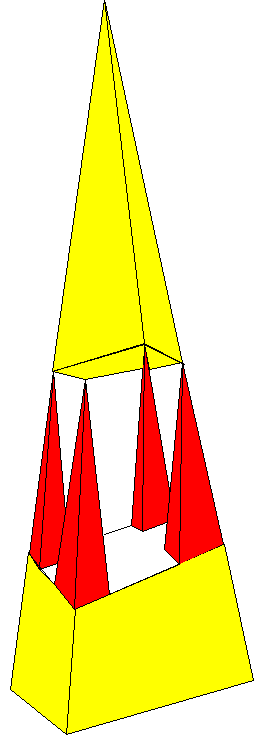
home
| index | me | Cobh | where | work | palm | music | nose | kitchen | Daire | Daire is One | |
| torture | life | linkymandelbrot | Dutch | Nihongo | med | Dr Seuss | poet |
| Diary: books | films | music | todo | walks | trips | web |
 home |
|
Aurora Borealis (I saw something Oct 25 2001, Dublin) Alaska Science Aurorea substorm pfrr aurorea FAQ About.com aurorea FAQ about.com Aurorea Borealis ireland aurora pictures
SOHO: The Solar and Heliospheric Observatory gallery archive summary latest
Astronomical Imaging astroimage: Dublin, 05/01/2000 20:00
Jupiter orbit: 778,330,000 km (5.20 AU) from Sun diameter: 142,984 km (equatorial) mass: 1.900e27 kg
main satellites: (Galilean satellites 1610)
1:2:4:8 orbit lock (almost - excepting Callisto)
. . . o .
C G Io E
Distance Radius Mass
Satellite (000 km) (km) (kg)
--------- -------- ------ -------
Io 422 1815 8.94e22
Europa 671 1569 4.80e22
Ganymede 1070 2631 1.48e23
Callisto 1883 2400 1.08e23
(jan 5 2000 16:20ish)
Saturn orbit: 1,429,400,000 km (9.54 AU) from Sun diameter: 120,536 km (equatorial) mass: 5.68e26 kg
VSOP87 planetary theory. This theory was developed back in the mid and late 1980's by astronomers (Bretagnon, Chapront, Chapront-Touze, Laskar, Simon, Morando to name a few) at the Bureau des Longitudes in Paris, France. The object of their research was to develop a set of closed-form analytical formulas, similar to those previously developed by astronomers such as Simon Newcomb, that accurately describes the motions of the Sun, Moon, and planets. Their model included standard Newtonian gravitational interactions, which are very well understood both physically and mathematically, and relativistic effects that the older mathematical theories neglected because these effects were, at the time, unobservable. The actual numbers you see in Meeus' book are derived from the process of making the mathematical model match values (coordinates) given by brute force numerical integration of the rigorous relativistic equations of motion. These numerical integrations are carried out most notably at the Jet Propulsion Laboratory (JPL) in California and they are the most accurate way of modeling planetary motions. However, the integrations are not in the most directly useful form for amateur astronomers to use whereas a cut-and-dried formula in which you plug in the time and out pops the answer IS more directly useful.
Because the VSOP87 theory (and the similar ELP2000 lunar theory which describes the Moon's motion) is calibrated to the JPL ephemerides, the VSOP87 is no more accurate than the JPL ephemerides are and really only suffices for optical observations. Nevertheless, the VSOP87 theory and its more recent cousins serve a useful purpose for programmers.
Book, PRACTICAL EPHEMERIS COMPUTATIONS, Joe Heafner, describes (among other things) the JPL ephemerides and provides software in both PowerBasic and ANSI C for using the JPL ephemeris data files. Both my book and a CD-ROM with the JPL data are available from the publisher, Willmann-Bell, Inc..
| Name | Month (at 00:00pm) (anywhere on earth) |
Right Ascention (hours) |
Declination (degrees) |
|---|---|---|---|
| Triangulum tri | Jan | 2.11 | 32 |
| Perseus per | Jan | 3.71 | 41.8 |
| Taurus tau | Feb | 4.27 | 18.9 |
| Orion ori | Feb | 5.59 | 4.6 |
| Canis Major cma | Mar | 6.86 | -22.0 |
| Canis Minor cmi | Apr | 7.66 | 5.9 |
| Ursa Major uma | May | 10.37 | 55.4 |
| June | 13 | 50 | |
| Ursa Minor umi | July | 14.78 | 74.36 |
| Draco dra | Aug | 17.75 | 62.5 |
| Hercules her | Aug | 17.33 | 29.9 |
| Lyra lyr | Sep | 18.84 | 36.8 |
| Cygnus cyg | Oct | 20.62 | 42.0 |
| Pegasus peg | Nov | 22.75 | 19.5 |
| Cepheus cep | Nov | 22.52 | 71.6 |
| Andromeda and | Dec | 0.54 | 38.5 |
| Cassiopeia cas | Dec | 1.01 | 62.2 |
Ursa Major
+ + 1 2
+ . + 3 4 5
+ + 6 7
Name, class, distance (light years), RA, Declination, Magnitude
astronomy.ie Temple-tuttle & leonids, Nov 17th every year astro link list Irish Physics departments nightskyobserver.com (an Irish page too?)
Satellite info from heavens-above.com:
Observing Satellites intro
Brightest Satellite list for today
Select Satellite
ISC: Dublin times
info
MIR: Dublin times
info
(er ... yes, MIR is gone)
Iridiums
Iridium flares, 7 day
fourmilab.ch Home-Planet astro software for Windoze YourSky astro webserver (Dublin is roughly 53deg 12 min N, 6deg 6min W.)
sterrenwacht and Java daily astronomical event calculator "Astronomical Algorithms" by Jean Meeus.
Vernal equator & poles in line withe earth's equator & poles. Polaris, ... Definitions of Right Ascention (point on vernal equator where rises?) and declination
SEDS Students Exploring & Discovering Space
Dark Sky
Sky & Telescope Magazine
links
Space Imaging
GPS howstuffworks USNO utexas What does Dublin look like from a GPS satellite then? :) GPS view 2200k above, well I think there at 55degree orbits but it's close enough. And from the top of the troposphere 200k above
Astrodienst Astrology :-7 Cobh mapblast Cobh Astronomic Clock shareware someone on usenet sci.astro ngc0908 ngc1300 ngc2207